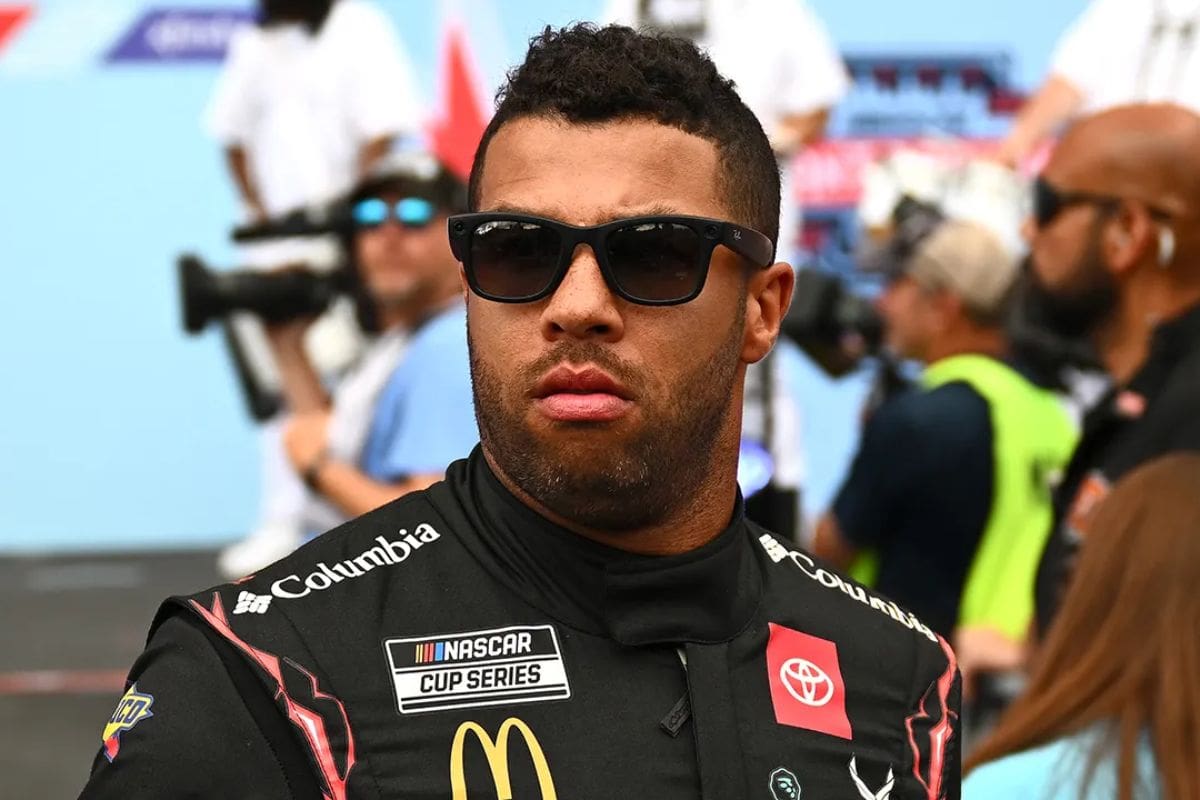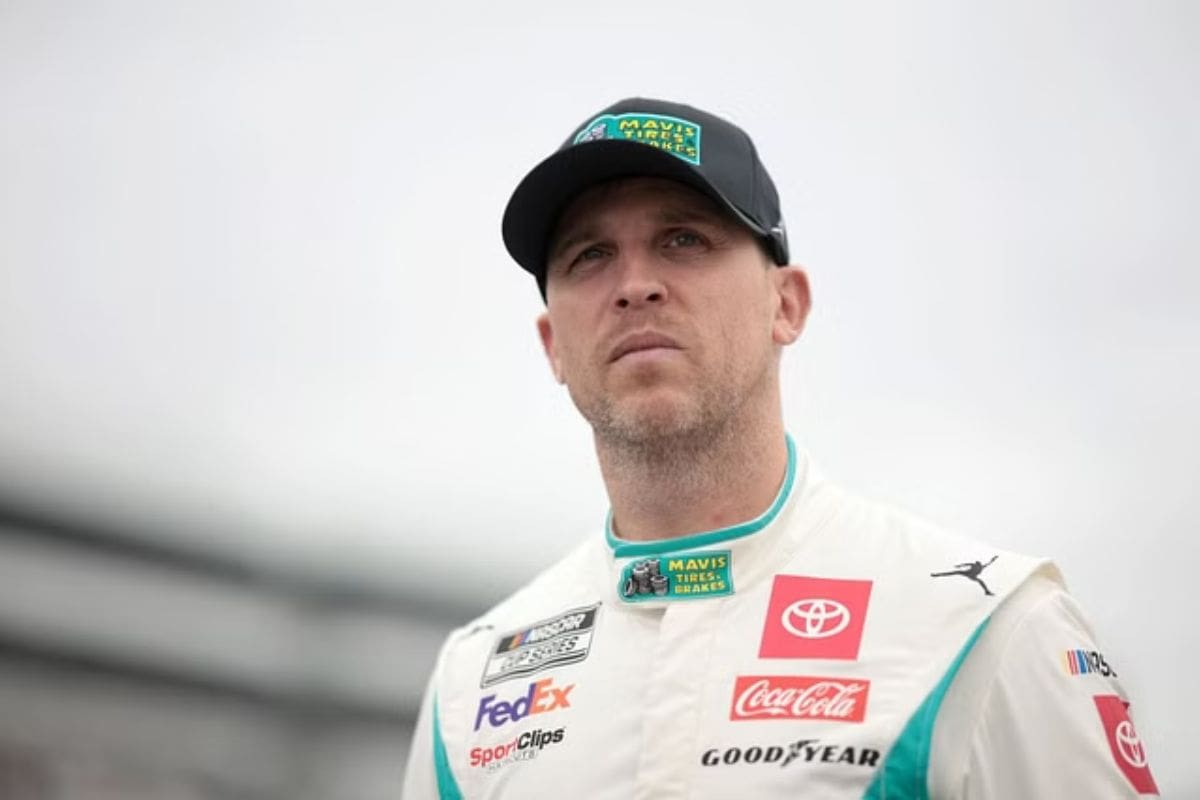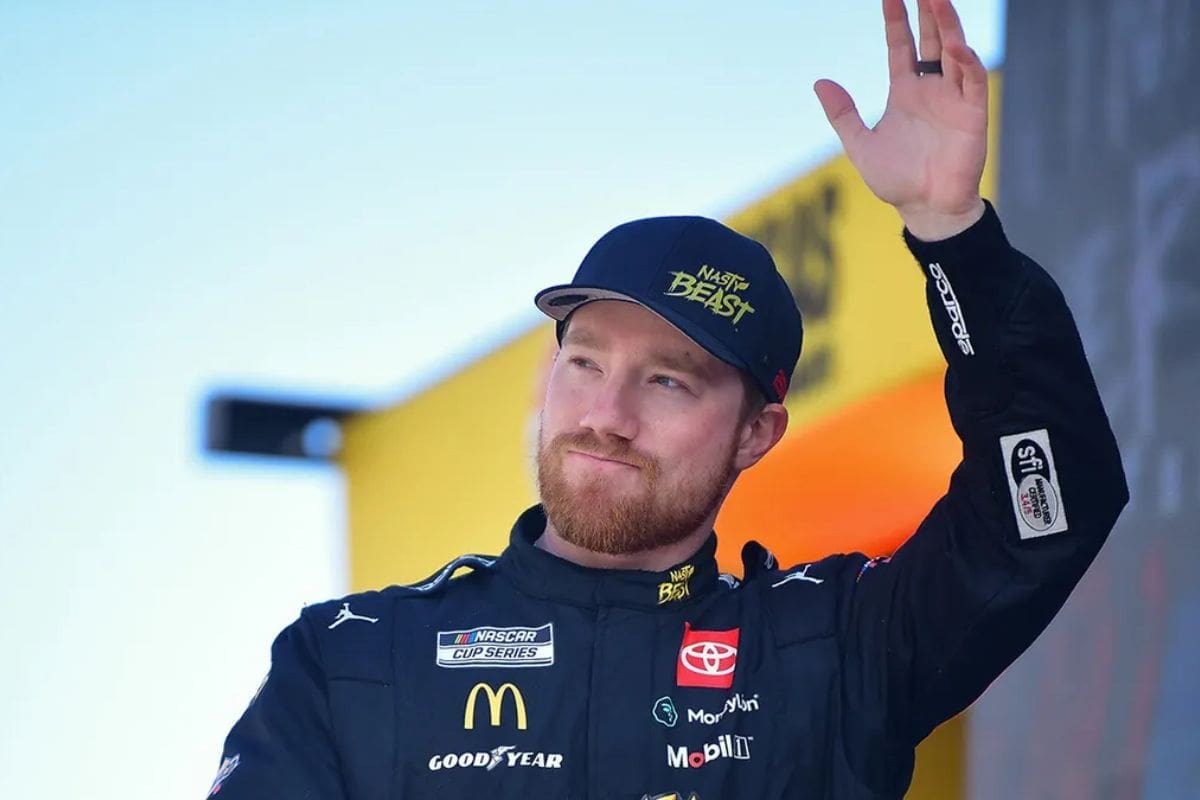Hamlin’s Unfiltered Take on Reddick’s Speed: Denny Hamlin offers an unfiltered viewpoint on Tyler Reddick‘s superior speed and consistency compared to Bubba Wallace. He attributes Reddick’s edge to his exceptional ability to extract raw speed and effectively utilize data insights, which contrasts with Wallace’s struggles with inconsistency. Hamlin emphasizes the importance of equipment parity, but also recognizes the crucial role of the driver’s performance in maximizing the vehicle’s potential. This performance gap within 23XI Racing has prompted Hamlin to push for improved tactical and collaborative efforts to optimize race-day outcomes. To investigate the strategic implications of these insights, a closer look at the underlying data is essential.
Key Takeaways
- Hamlin highlights Reddick’s exceptional talent in extracting raw speed from the car.
- Wallace’s inconsistency in performance remains a concern for Hamlin.
- Equipment parity is crucial, but driver performance is paramount, according to Hamlin.
- Hamlin emphasizes the importance of optimizing the car’s potential for both drivers.
- Data-driven insights from tire tests significantly contribute to Reddick’s competitive advantage.
Bubba Wallace’s Playoff Push and Team Pressure
Bubba Wallace’s pursuit of a playoff berth has intensified as he faces increasing expectations from both his performance metrics and team demands. The recent top-10 finish at Pocono was a critical step in reducing the gap to the playoff cutline, with only five races remaining to secure a spot. While Wallace has shown resilience, his vocal discontent about relying on points to qualify highlights the mounting pressure. This sentiment is echoed by team owner Denny Hamlin, who has identified Indianapolis and Daytona as key opportunities for Wallace to secure a win and guarantee a playoff position.
Hamlin’s focused attention on these particular tracks emphasizes the crucial nature of the upcoming races. Indianapolis, with its unique layout and challenging corners, and Daytona, known for its high-speed, high-stakes racing, are viewed as promising venues where Wallace can utilize his skills and the team’s resources to achieve a victory. The emphasis on these tracks highlights the importance of not just consistency but also seizing strategic opportunities to optimize performance and results.
The team’s internal dynamics play a significant role. As Wallace navigates the pressures of meeting performance expectations, the support and directives from the leadership become crucial.
Discrepancies in 23XI Racing’s Performance
As the urgency builds for Bubba Wallace to secure his playoff berth, the contrasting performances within 23XI Racing have become increasingly apparent. While Tyler Reddick has been displaying impressive speed, even surpassing Denny Hamlin in the regular season points standings, Wallace continues to struggle with inconsistency. This difference highlights a crucial issue for 23XI Racing as they navigate the high-stakes environment of the NASCAR playoffs.
“It’s hard to pinpoint it, It honestly is, They most times show up with the same car and obviously, it’s difference in driving styles and preferences and things like that. ” -(hamlin)
Tyler Reddick’s rise in the points standings emphasizes his competitive edge, showcasing both his driving skills and the effectiveness of his team’s strategy and execution. Reddick’s ability to consistently deliver strong finishes has positioned him as a strong contender, even as he targets the top spot currently held by Chase Elliott.
Bubba Wallace finds himself in a precarious situation, balancing on the playoff bubble. With only four spots remaining, the intensity is palpable. Wallace’s challenge to match Reddick’s speed and consistency raises questions about the underlying factors contributing to the performance gap within the same team. Whether it is related to car setup, pit crew efficiency, or driver adaptation, these differences demand examination.
The performance gap within 23XI Racing not only impacts the immediate playoff prospects but also reflects broader implications for the team’s competitive strategy moving forward. Addressing these differences is crucial for 23XI Racing to optimize its overall performance and ensure both drivers can compete at the highest levels.
Denny Hamlin’s Insight on the Performance Gap
Denny Hamlin’s unique perspective as both team owner and driver offers valuable insight into the performance gap between Tyler Reddick and Bubba Wallace at 23XI Racing. Hamlin’s analysis highlights a fundamental aspect of motorsports: while equipment parity is crucial, the driver’s ability to extract peak performance from the car is paramount.
Hamlin addressed the difference in performance between Reddick and Wallace. He acknowledged the challenge in pinpointing the exact reasons behind the gap, despite both drivers having access to similar machinery. ‘They most times show up with the same car and obviously, it’s a difference in driving styles and preferences,’ Hamlin noted, emphasizing the intricate nature of the issue.
Hamlin’s open admission accentuates his respect for Reddick’s innate driving ability. He stated, ‘Tyler Reddick’s generally just faster. And you know, if he were probably in my car, he’d be quicker.‘ This bold declaration highlights Reddick’s exceptional talent in extracting raw speed from a car, a skill that sets him apart even within the same team dynamics.
Furthermore, Hamlin emphasized Reddick’s consistent ability to optimize the car’s potential. ‘He’s just got the ability to get raw speed out of a car,’ Hamlin remarked. This ability to harness the vehicle’s performance to its fullest extent is a distinguishing factor that contributes significantly to the observed performance gap.
Hamlin’s Frustration with #23 Car Performance
Addressing the ongoing challenges with the #23 vehicle, Hamlin voiced his frustration with the current performance levels and emphasized the necessity for the team to recognize and resolve the underlying issues. Despite acknowledging the inherent speed of the machines brought to the track by 23XI Racing, Hamlin pointed out the difference in results, especially with the #23 car driven by Bubba Wallace. ‘The pace has not met our expectations,’ Hamlin expressed, reflecting a tangible dissatisfaction that highlights the urgency to improve competitive performance.
- Technological Assessments: There is a critical need to conduct a thorough technological analysis to pinpoint any mechanical or aerodynamic deficiencies that may be affecting the #23 vehicle’s speed.
- Team Collaboration: Enhanced communication and strategy implementation among the technological team and pit crew are crucial to optimize race-day performance and adapt to changing track conditions.
- Driver Feedback Integration: Bubba Wallace’s firsthand experience and feedback must be carefully incorporated into vehicle adjustments to ensure that the car aligns with his driving style and preferences.
- Data-Driven Choices: Utilizing advanced data analytics to identify patterns and anomalies in performance metrics could offer actionable insights that lead to tangible improvements on the track.
Hamlin’s criticism is not just a reflection of dissatisfaction but a call to action for the 23XI Racing team to improve their competitive edge. As the question increases, especially with high-stakes races like the Brickyard 400 on the horizon, the urgency to address these issues becomes even more pressing.
Tyler Reddick’s Advantage and Data Insights
Utilizing data insights from Denny Hamlin’s tire test at Indianapolis, Tyler Reddick has shown a remarkable competitive edge leading up to the Brickyard 400. Reddick’s performance in the lead-up to the race has been exceptional, supported by the tactical use of thorough data gathered during Hamlin’s participation in the Goodyear tire test.
“Obviously, it seemed like Denny had a really good test and we were able to get some good data from him. Tracks like this, it’s always a question mark to some degree, you know? How close is your sim preparation going to be? But it seemed like everyone did a pretty good job. Pretty happy with how the car drives.”-(tyler)
Reddick’s acknowledgment of the valuable data from Hamlin highlights the significance of collaborative efforts within 23XI Racing. The insights provided from Hamlin’s test have clearly been crucial in optimizing car setups and strategies, enabling Reddick to extract maximum performance from his vehicle.
From an analytical perspective, the data from Hamlin’s tire test provided vital information on tire wear, grip levels, and ideal racing lines at Indianapolis. Such data are important for fine-tuning car configurations, particularly in a high-stakes environment like the Brickyard 400.
News in Brief: Hamlin’s Unfiltered Take on Reddick’s Speed
The analysis highlights noteworthy performance discrepancies within 23XI Racing, particularly between Tyler Reddick and Bubba Wallace.
Denny Hamlin provides crucial insights into this performance gap, expressing frustration with the #23 car’s inconsistency.
Data suggests Reddick’s advantage is considerable, emphasizing the need for tactical adjustments.
A holistic approach is necessary to improve team performance and maximize Wallace’s playoff potential, addressing underlying issues that contribute to the current differences in speed and race results.
ALSO READ: Denny Hamlin’s Championship Desperation While Eyeing an Extended NASCAR Legacy



